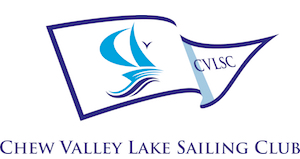The psychology of gybing in strong winds
How many times have we all approached the gybe mark on a windy day with trepidation? How often have we validated our concerns by taking a swim with our mates in the ‘graveyard’ of upturned hulls?!
The problem
The biggest problem that I observe when watching sailors gybing in strong winds is either lack of commitment to the gybe or ‘freezing’; seemingly hesitating and forgetting where they need to be and what need to do in the key moments. Occasionally people are even still on the leeward side of the boat when the boom comes across; as if they have ‘frozen’ and disengaged from the activity half through!
Nearly all the club racers at Chew know how to gybe. They have done hundreds, maybe thousands of successful gybes! Yet they still seem to doubt their bodies ingrained learned ability to gybe when it comes to strong winds.
The end result is a poorly timed and executed gybe that lacks fluidity. And…often…a swim!
The solution
Technique plays a part. Setting aside enough time and effort to practice will improve the fluidity of the learned bio-mechanics that our bodies use to gybe successfully. However, we all have limited time afloat; so below I’ve offered a few thoughts that may help from the comfort of your sofa.
Psychology
I believe that all club sailors can ‘automatically’ gybe fluidly and successfully in strong winds; if they can keep their conscious ‘mind’ or ‘brain-thoughts’ busy on other things!
The problems start when our ‘mind’ gets over involved in the task execution; trying to tell the body how to gybe fluidly. The conscious brain just isn’t fast enough to do a good job of processing this instinctive set of complex bio-mechanics!
If asked to break down ‘how you walk’ or ‘how you tack’ I expect that you may find yourself ending up saying ‘well I can’t really explain it succinctly; but I know I can do it and I can show you…’
Occupy your mind with what matters
Occupying your mind with the things that matter can be highly effective when you want your free up your instinctive ‘unconscious brain’ to do what it already knows how to do.
Find things that your conscious brain/mind can do well; such as thinking about the next leg, looking for the next mark, sail shape, tactics etc. The conscious mind is particularly good, I personally find, at making observations (e.g. where is the next mark / are the boats ahead going high or low compared to the rhumb-line), or quantifying ‘how much’ (e.g. how many metres to the next mark) or even answering fact based questions such as ‘what is happening on the course’.
I find that getting my conscious brain busy evaluating or observing calms my mind; as I’ve given it a job that it can actually be helpful with!
Summary
Next time you’re blasting down towards the gybe mark in a blow; try to get your mind busy thinking about the next leg; gybe when it ‘feels right’ and let your body’s learned bio-mechanics gybe the boat for you!

Photo courtesy of YachtPals.com
